Tacheocampylaea Sardinien
© Alessandro Margelli & Clemens M. Brandstetter
Tacheocampylaea L. Pfeiffer 1877
Die Arten Sardiniens:
Tacheocampylaea carotii Paulucci 1882
syn: Tacheocampylaea gennarii (Paulucci, 1882), T. melonii (von Maltzan, 1886)
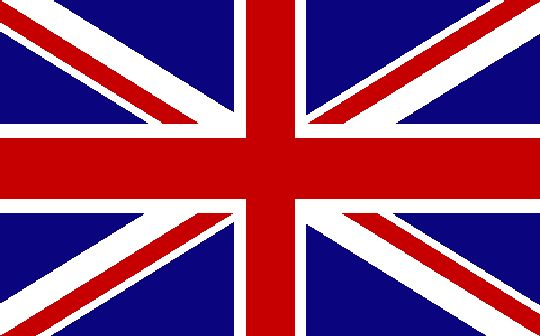 Falkner & al. 2011b: In contrast to Zilch (1952), who divided the Sardinian Tacheocampylaea's in the polytypic species carotii with the subspecies carotii s. str. and T. carotii melonii and T. gennarii as distinct species, the Italian checklist (Manganelli et al. 1995) and Fauna Europaea treat all Sardinian populations as one species under the name T. carotii. This species is endemic to Sardinia, Italy. The species is endemic to a small part of central eastern Sardinia from Nuoro up to Lanusei; a disjunct occurrence is historically known from the Monte Santo di Pula in the extreme south of the island (type locality of T. carotii melonii (Maltzan, 1886)). Although this occurrence has been confirmed by Pollonera (see Caziot 1917) the note "distribuzione limitata alla Sardegna centrorientale" in Manganelli et al. (1995) for the species agg. seems to indicate a doubt in the authenticity of this locality. Thus, the extent of occurrence is 1,600 km² (if the Monte Santo di Pula is included this would be 3,500 km²). The species occurs in few and small populations in a restricted part of an island with heavy tourist development. As there is no continuous research only single specimens are found by chance. Most of the known occurrences date from the 19th century. The collection material indicates that the populations have been much more dense in the past. For these reasons it is assessed as Vulnerable (VU) B1ab (iii,v) + 2ab (iii,v). There is no information available on the population size or trend of this species. However, observations from the field suggest that the sub-populations are decreasing.
Falkner & al. 2011b: In contrast to Zilch (1952), who divided the Sardinian Tacheocampylaea's in the polytypic species carotii with the subspecies carotii s. str. and T. carotii melonii and T. gennarii as distinct species, the Italian checklist (Manganelli et al. 1995) and Fauna Europaea treat all Sardinian populations as one species under the name T. carotii. This species is endemic to Sardinia, Italy. The species is endemic to a small part of central eastern Sardinia from Nuoro up to Lanusei; a disjunct occurrence is historically known from the Monte Santo di Pula in the extreme south of the island (type locality of T. carotii melonii (Maltzan, 1886)). Although this occurrence has been confirmed by Pollonera (see Caziot 1917) the note "distribuzione limitata alla Sardegna centrorientale" in Manganelli et al. (1995) for the species agg. seems to indicate a doubt in the authenticity of this locality. Thus, the extent of occurrence is 1,600 km² (if the Monte Santo di Pula is included this would be 3,500 km²). The species occurs in few and small populations in a restricted part of an island with heavy tourist development. As there is no continuous research only single specimens are found by chance. Most of the known occurrences date from the 19th century. The collection material indicates that the populations have been much more dense in the past. For these reasons it is assessed as Vulnerable (VU) B1ab (iii,v) + 2ab (iii,v). There is no information available on the population size or trend of this species. However, observations from the field suggest that the sub-populations are decreasing.
No conservation actions are currently in place. The identified threat to this species is through fire. The complete destruction of at least three populations by forest fire raising could be documented in 2000 (G. and M. Falkner, pers. com., 2011).
Dorgali, Cala Fuili – im Jahre 2014 gab es noch zahlreiche frische Gehäuse – Foto: Giuseppe Pocaterra.

Tafel mit Leerschalen von Cala Fuili (Prov. Nuoro) aus Margelli (2013).

Tafel mit Leerschalen von Cala Gonone (Prov. Nuoro) aus Margelli (2013).

Tafel mit Leerschalen von Cala Gonone (Prov. Nuoro) aus Margelli (2013).
Im Jahr 2015 war es dann soweit: anlässlich einer Exkursion in Dorgali nahmen wir mit dem dortigen Museum Kontakt auf und baten um Nachschau bei schlechtem Wetter im Fundgebiet. Und tatsächlich:
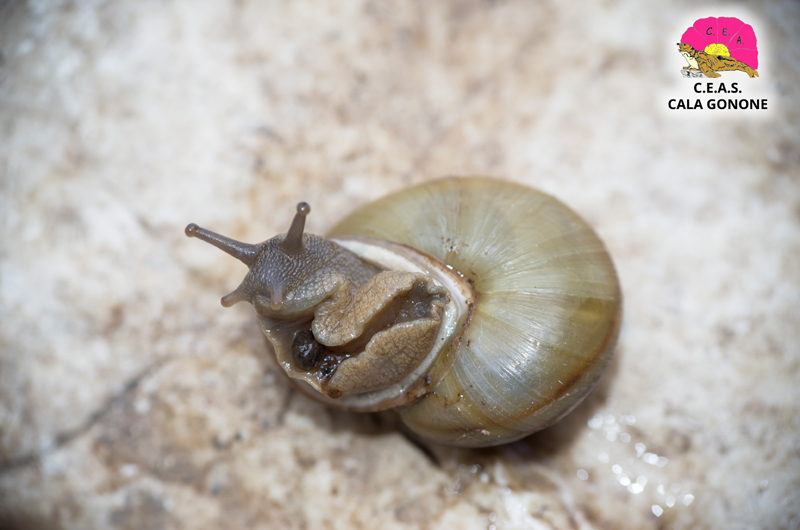
Erstes lebend dokumentiertes Exemplar – Foto: Maurizio Mereu.
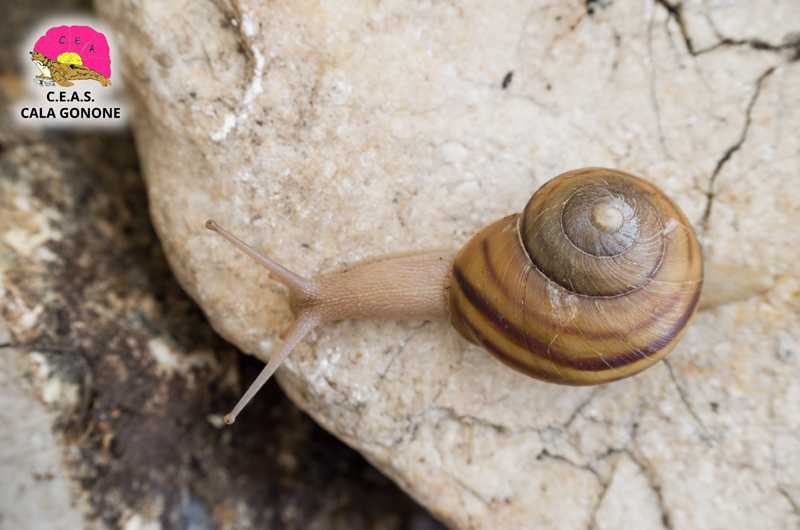
Nach kurzem Warten setzte sich das Tier in Bewegung – Foto: Maurizio Mereu.
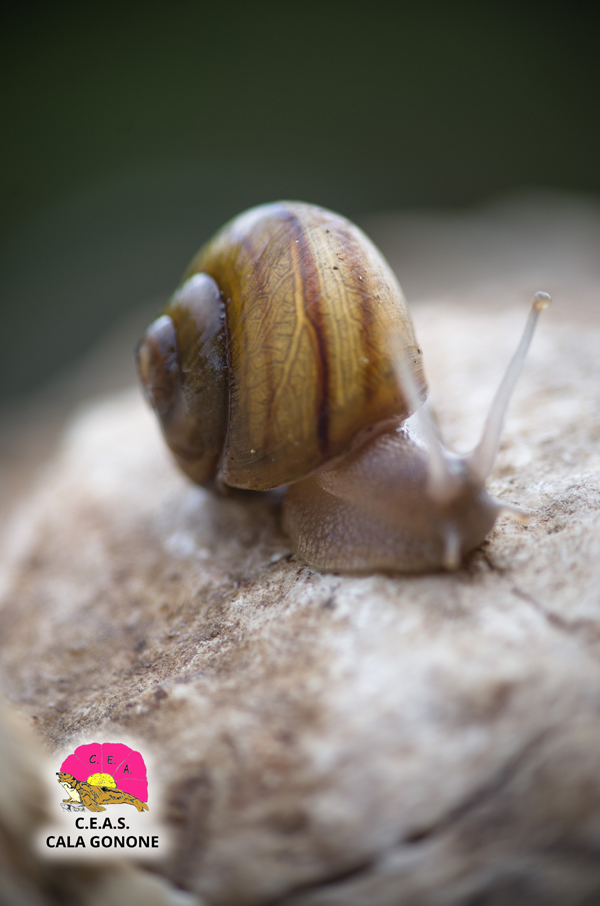
Ansicht von vorne im Gegenlicht – man erkennt die Schalenstruktur – Foto: Maurizio Mereu.
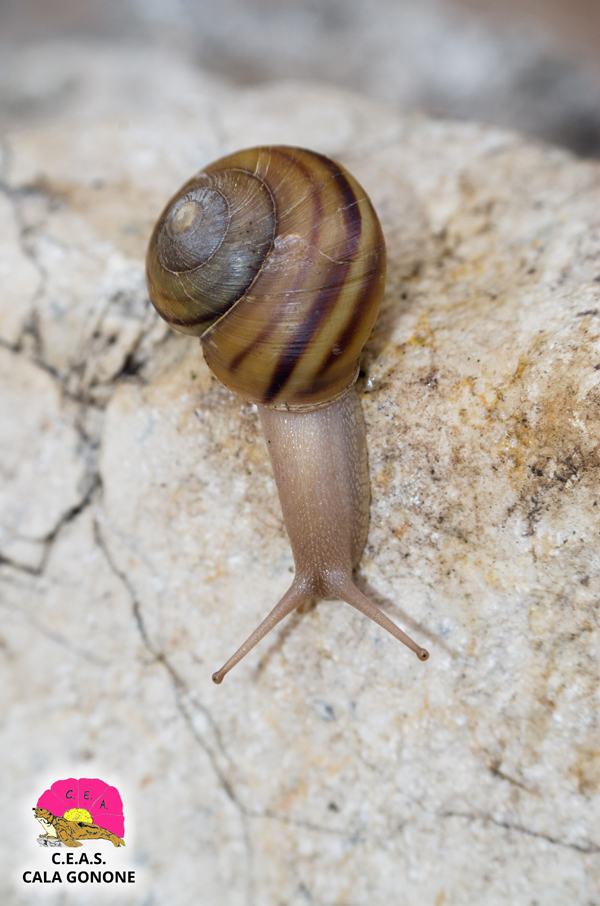
Ansicht von oben – Foto: Maurizio Mereu.
Dorgali – Cala Fuili: ein Fundgebiet der Sardischen Tacheocampylaea-Art – Foto: C.M.Brandstetter.
Das Gebiet ist enorm felsig und wird daher sehr stark durch Kletterer frequentiert. Es ist anzunehmen, dass die Tiere hier überall vorkommen und andererseits zu hoffen, dass nicht alle Felswände beklettert werden. Gedankenlos und fahrlässig wäre es, hier während der Nacht diesem Freizeitsport nachzugehen.
Diese wunderschöne Art wurde von Höhlenforschern auch in Höhlen gefunden.

Tafel mit Leerschalen von Nuraghe Mannu (Prov. Sassari) aus Margelli (2013).
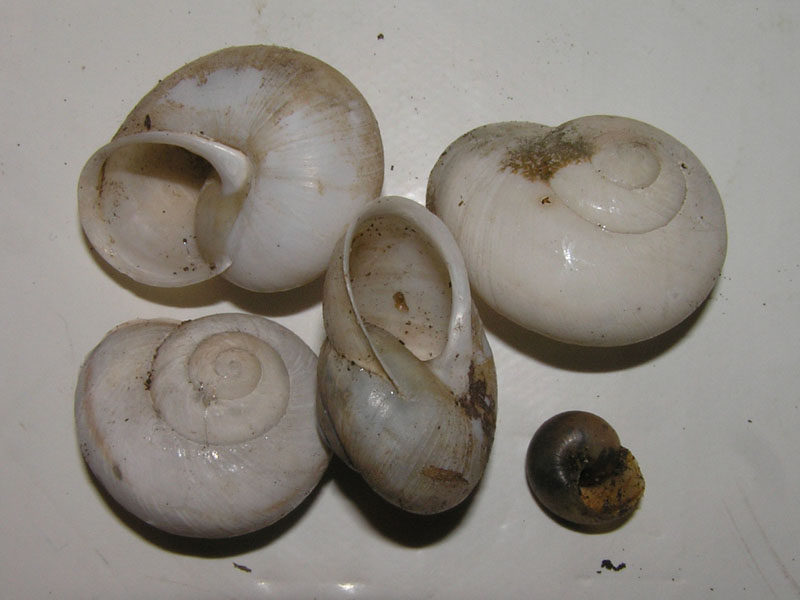
Tacheocampylaea sp.- Ostteil der Insel.
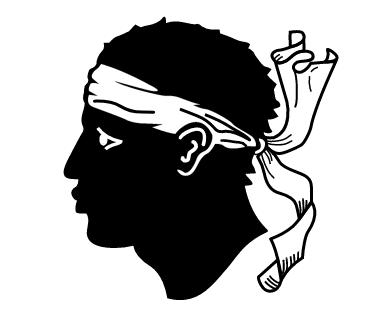 Link zu den Arten der Insel Korsika
Link zu den Arten der Insel Korsika
 Link zu den Arten der Insel Capraia
Link zu den Arten der Insel Capraia
Link zur Seite Allgemein, Gefährdung, Schutz, Literatur hier klicken
